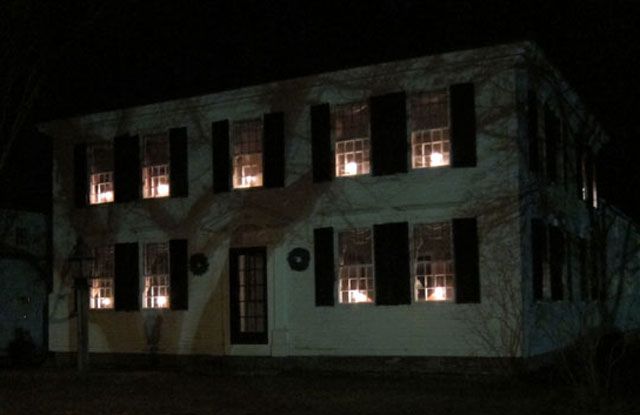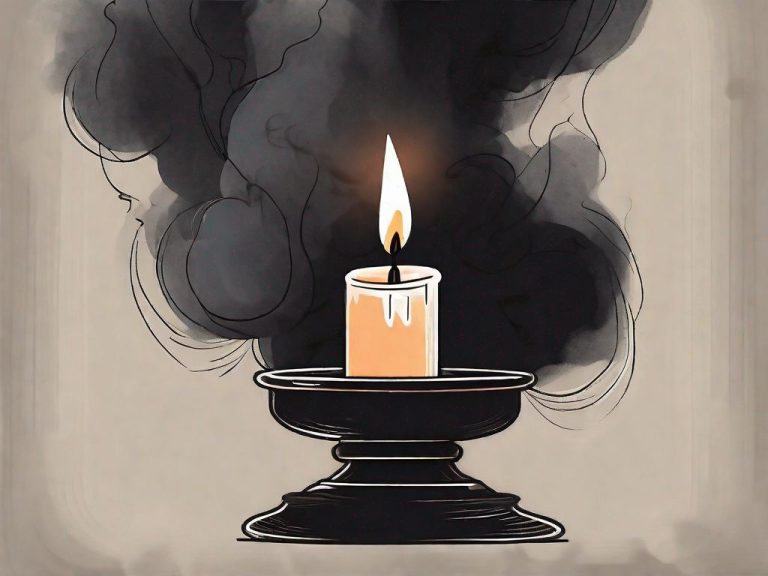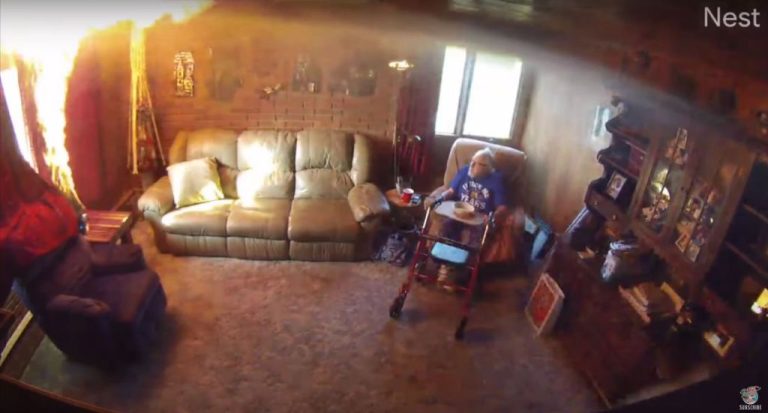Who Made The First Candle?
Candles have been used for illumination and other purposes for many thousands of years. Their simple design involving fuel in a container with a wick makes them one of the most basic forms of artificial lighting humans have created. However, the specific origins of candles are unclear since evidence is scarce from ancient and prehistoric times. Archaeologists continue to uncover clues that bring us closer to understanding the first use of candle-like devices by our ancestors.
While simple lamps using animal fat dates back to the Paleolithic era, the development of true candlemaking from wax and wicks appears to have emerged sometime between 5,000 – 3,000 BCE. But pinpointing exactly where and when the first candle was invented has proven to be a difficult task.
What we do know is that early civilizations valued candles and similar devices not just for the light they produced, but also for their symbolic power. Candles came to represent knowledge, life and divinity in many cultures and faiths. Their history and evolution is deeply intertwined with human civilization.
Earliest Evidence of Candle-Like Devices
The earliest known candle-like devices date back to at least 3,000 BCE and were used by ancient civilizations around the world. These primitive candles were not true candles made of wax or tallow, but rather oil lamps consisting of reservoirs filled with liquid oil, plant oils, or animal fats and a wick to absorb and burn the liquid fuel. Archaeological evidence shows that various ancient cultures invented similar oil lamp devices independently.
In Egypt, shallow bowl-shaped pottery lamps fueled by vegetable oils date back to at least 3,000 BCE. Egyptians used circular concave lamps made of stone and pottery. These oil lamps were commonly used in ancient Egyptian homes and temples.
In ancient Rome, oil lamps took many forms like terracotta shell-shaped lamps and tube-shaped lamps made of glass. Romans used olive oil and animal fat as fuel. Some oil lamps discovered in ancient Rome had designs and decorative shapes like animals.
In ancient China, bronze oil lamps were being used around 3,000 years ago during the Shang Dynasty. These lamps had artistic zoomorphic shapes and designs. By the Han dynasty (206 BCE-220 CE), oil lamps made of pottery and bronze were widespread throughout China.
Other ancient civilizations like the Persians, Mesopotamians, and Indians also used early oil lamps as a source of artificial lighting. Thus, while not true candles, the development of oil lamp technology laid the groundwork for candle invention millennia later.
When Were True Candles Invented?
True candles utilizing wax were likely developed around the Middle Ages in Europe. However, the exact origins are uncertain. Before this time, various ancient civilizations used devices similar to candles, such as oil lamps, torches, and tapers made of braided papyrus. But these did not contain self-sustaining wicks like modern candles.
The earliest evidence of true candle-making dates back to around the 5th century CE in Europe. As candlemaking developed into an organized craft in medieval times, candlemakers known as chandlers formed guilds. The oldest known candle guild dates from the 12th century in Paris. Candle guilds set regulations and standards around candle production and sales.
Wax and tallow candles produced during the Middle Ages provided lighting in an era before electricity. The exact timeline of events that transformed candle-like devices into proper, wax-based candles with wicks remains uncertain. But medieval candlemaking revolutionized artificial lighting in Europe and laid the foundation for candle use for centuries to come.
Materials Used in Early Candles
The materials used to make early candles largely depended on what was locally available. In areas with grass-eating animals, tallow became a common candlemaking material. Tallow is the hard fat rendered from beef or mutton. This rendered fat burns with a bright flame and less smoke than other fats, though the smell was unpleasant. Tallow remained the most common candle material in Europe through the middle ages.
In areas with ready access to beeswax, such as China and India, beeswax candles became more prevalent. Beeswax candles burned cleanly and free of unpleasant odors. However, beeswax was more expensive than tallow. Whale fat was also used in early candlemaking in maritime communities. Like tallow, whale fat candles produced a foul smelling smoke when burned. Plant oils were another early candle material, such as olive oil in the Mediterranean.
The regional availability of materials shaped the development of candlemaking in different areas. Tallow remained the predominant candle material in Europe, while beeswax and plant oils were more common in Asia. Whale fat candles became important for communities engaged in whaling and seal hunting.
The Rise of Candlemaking as an Industry
Commercial candlemaking began to grow substantially in 18th and 19th century Europe and North America as demand for candles increased. Early candlemakers made candles at home or in small shops, but improvements in production methods and technology enabled large-scale candle manufacturing to emerge.
In the 1700s, most candles were still made from tallow (animal fat). But around this time, spermaceti, a waxy substance from sperm whales, became available. Spermaceti candles burned brighter and cleaner than other candles, making them popular despite their higher cost. The whaling industry expanded dramatically to meet the demand for spermaceti.
The 1800s brought even more advances to candlemaking. In 1834, inventor Joseph Morgan introduced a machine to extrude candles, allowing continuous production. Commercial soapmaking provided supplies of stearin, a byproduct that gave hard, durable candles. Paraffin wax from petroleum allowed cost-effective candle production by the late 1850s.
These developments enabled large factories to produce candles efficiently and inexpensively. By the mid-1800s, price drops made candles affordable daily necessities for ordinary households. Major candlemaking companies like Prices Candles emerged in England, while the US candle industry centered around Cincinnati and St. Louis.
Candle Use Through History
Candles have a long history as one of the most essential sources of artificial light, especially before the nineteenth century invention and spread of electricity. For thousands of years, candles provided illumination for daily life, religious practices, and cultural rituals. Until the invention of gas lighting and kerosene lamps in the eighteenth and nineteenth centuries, candles were the primary means of lighting homes, public buildings, shops, and city streets at night.
One of the earliest key uses of candlelight was the religious spaces of temples, churches and shrines. Jewish menorahs, Hindu divas, and Catholic and Orthodox altar candles and sanctuary lamps all helped to focusing spiritual reflection and create a holy ambiance. Candles have also long been featured in important ceremonies and celebrations, such as weddings and birthday cakes. Candle-lit settings have often set the mood for romance and fine dining. Candles also allowed families to have light by which to eat, socialize, and work during the evenings before electricity.
Beyond religious and domestic uses, candles found practical applications such as for sealing letters, providing light for medical procedures, and for reading and studying at night. Early street lamps were fueled by candles, and then later by oil and kerosene, before the advent of gas and electric lighting. Even with the spread of electricity, candles have retained cultural and spiritual significance as symbolic of comfort, celebration, remembrance, prayer, and light in the darkness. Their warm glow continues to be part of holidays, ceremonies and special occasions in the modern era.
Candlemaking Techniques Through Time
Candlemaking methods evolved over centuries as new technologies emerged. In early times, candles were made by hand dipping. Wicks were repeatedly dipped in melted tallow or beeswax until the desired thickness was achieved. This was a laborious and time-consuming process. Hand rolling candles was slightly faster, but still required extensively handcrafting each individual candle.
In the 18th century, molding candles became popular. Wicks were suspended in molds, and wax was poured around them. This sped up production and allowed for making multiple candles at once. However, each candle still had to be manually removed from the mold.
The 19th century brought major innovations that industrialized candlemaking. These included large vats for heating wax instead of individual pots, and mechanized dipping devices. Later, automated candle machines streamlined the entire end-to-end process from wax melting to molding to ejecting finished candles.
Today, advanced methods like extrusion and injection molding are used. Extrusion involves forcing melted wax through a die to create the proper candle shape. Injection molding uses wax forced into molds under high pressure. Computerized machinery allows for high-volume candle manufacturing with little human involvement. Centuries of candlemaking evolution have led to the efficient, large-scale production methods used now.
Candles Today
In modern times, candles remain popular despite the widespread adoption of electric lighting. The candle industry has grown into a multibillion dollar market globally. Many manufacturers mass produce candles made from paraffin wax, a petroleum byproduct that burns cleanly and consistently. Candle enthusiasts can also purchase handmade luxury candles made from beeswax, soy wax, palm wax and other natural materials.
Candles are still used for lighting during power outages, but today they largely serve decorative and aromatic purposes. Scented candles infused with essential oils or synthetic fragrances have surged in popularity. Candle makers offer a diverse array of scents to appeal to different tastes. Scented candles help set a mood and make indoor spaces more comfortable and inviting.
In addition to scented varieties, decorative pillar candles, votives, taper candles, tealights and more are available in a rainbow of colors. Candles add warmth and ambiance to rooms. They are popular gifts and are often used to decorate for special occasions or holidays. Despite electric lighting rendering candles unnecessary for illumination, their alluring glow continues to hold timeless appeal.
Unanswered Questions
While we know ancient civilizations used candle-like devices thousands of years ago, many details about the earliest origins of true candlemaking remain lost to history. Archaeologists and historians continue working to uncover new evidence and fill in gaps in our knowledge.
For example, we don’t know for certain exactly when wicks were first used in candles, who came up with the idea first, or how early candlewicks were made. The materials used in the earliest true candles are also still unclear. Further archaeological discoveries may reveal new insights into these and other unsolved mysteries surrounding the dawn of candlemaking.
Additionally, while ancient Egyptians and Romans clearly crafted candles, historians have not pinpointed the first known candlemaker. Records are scarce on early artisans specializing in candlemaking prior to the Middle Ages. More research may uncover the identity and background of the first candlemakers.
The reasons why early civilizations started making candles also remain speculative. Perhaps the earliest candle-like lamps provided light, helped keep time, or held religious significance. Upcoming breakthroughs in the historical record may shed new light on the impetus for the invention of the candle.
In summary, many details about the earliest candlemaking remain lost to history. More discoveries may yield new insights into the origins of when, where, how, why, and by whom the first candles were made.
Conclusion
The long history of candlemaking has been an integral part of human civilization. From the earliest crude lamps to the molded and scented candles of today, light has been manufactured in various forms for thousands of years. The origins remain obscure, with the earliest evidence of candle-like devices appearing around 5,000 years ago, but true candles using wax did not emerge until around 500 BC in Ancient Greece and China.
Over time, materials and techniques evolved from tallow to beeswax and spermaceti, and from dipping to poured and molded candles. Regional industries developed to meet growing demand. The art and craft of candlemaking progressed alongside technology. Throughout history, candles came to signify life, celebration, religion, and hope.
While the exact time and place when the first true candle was invented may never be known, the rich history of candlemaking reflects the very history of human civilization. From humble beginnings, the capacity to manufacture light advanced enormously, improving living conditions and opportunities for humankind.






